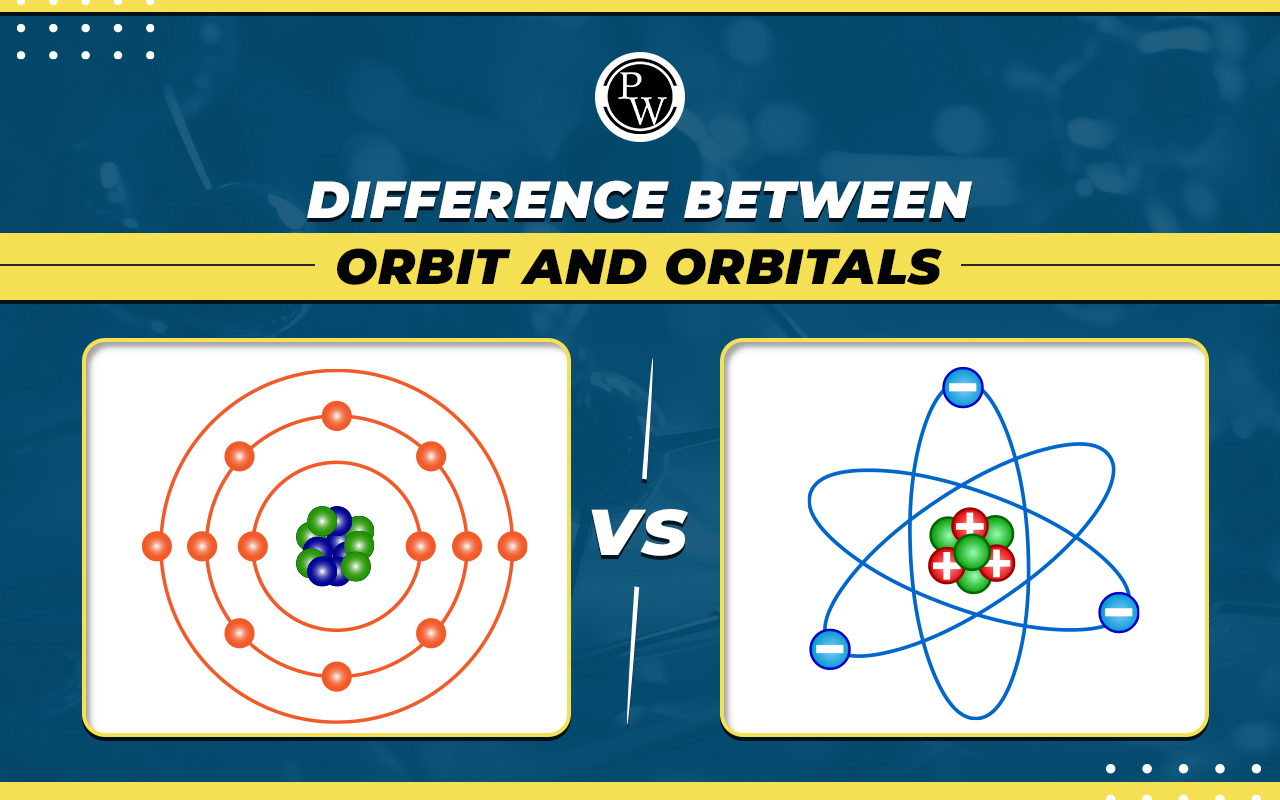

Difference Between Orbit and Orbitals: If you're aiming for the NEET exam, understanding the difference between "orbit" and "orbitals" is crucial. Imagine orbits like set paths where electrons move, almost like lanes on a road. Now, think of orbitals as spaces around the nucleus where electrons might be present, kind of like different rooms.
This concept is a part of the NEET syllabus and helps you see how electrons move in atoms. So get ready to understand the basics of the difference between orbit and orbitals.
Difference Between Orbit and Orbitals
Within the domain of atomic structure, the orbit and orbital difference is explained in their conceptual foundations. Bohr's orbits, aligned with classical mechanics, the movement of electrons along fixed paths at specific energy levels revolving around the nucleus. Conversely, the quantum mechanical perspective introduces "orbitals" as dynamic, three-dimensional probability distributions signifying probable electron locations. Unlike orbits, orbitals lack well-defined boundaries, acknowledging the uncertainty in electron position. This transition from orbits to orbitals signifies a fundamental shift, recognizing the probabilistic nature of electron behavior.
Difference Between Orbit and Orbitals Overview
This is quite interesting to understand the the orbit and orbital difference because it helps understand the path of electrons revolving around the nucleus. Here is the list of parameters by which the the orbit and orbital difference can be understood easily.
| Difference Between Orbit and Orbitals | ||
|---|---|---|
| Parameter | Orbit | Orbital |
| Definition | The fixed path followed by an electron | The three-dimensional region around the nucleus where an electron is likely to be found |
| Nature | Represents a two-dimensional path | Represents a three-dimensional space |
| Capacity | Can accommodate multiple electrons | Pauli Exclusion Principle states that it can hold up to two electrons with opposing spins. |
| Types | Electrons can exist in different energy levels, each having multiple orbits | Divided into subtypes such as s, p, d, and f orbitals, each with unique shapes and orientations |
| Quantum Numbers | Described by principal quantum number (n) | Described by principal quantum number (n), azimuthal quantum number (l), magnetic quantum number (m), and spin quantum number (s) |
| Movement | Electrons in orbits move in a specific path | Electrons in orbitals move in a probabilistic manner, making it challenging to precisely trace their paths |
| Visualization | Visualized as concentric circles around the nucleus in Bohr's model | Represented as cloud-like shapes, indicating the probable locations of electrons |
| Modern Description | Described by quantum mechanics | Described by quantum mechanics, providing a more accurate representation of electron behavior |
What is Orbit?
An orbit refers to the fixed path followed by an electron around the nucleus of an atom. According to Bohr's model, electrons occupy specific orbits at different energy levels. For example, in the hydrogen atom, the electron can exist in the first orbit (n=1), second orbit (n=2), and so on. Electrons can move between these orbits by either absorbing or emitting energy. Each orbit is associated with a particular energy level.. 
What is Orbital?
An orbital is a three-dimensional area that surrounds the nucleus and has a high electron probability.. Unlike orbits, which are well-defined paths, orbitals, described by quantum mechanics, offer a more nuanced understanding of electron behavior. Examples include s, p, d, and f orbitals. For example, the 1s orbital is spherical and is associated with the first energy level (n=1), while the 2p orbital is dumbbell-shaped and associated with the second energy level (n=2). These orbitals provide insight into the spatial distribution of electrons within an atom.Difference Between Orbit and Orbitals FAQs
What is the difference between orbit and orbital cavity?
What is the difference between an orbit and an orbital?
What is the difference between orbit orbital and subshell?
What is the difference between Bohr's orbits and atomic orbitals?
What are the 4 types of orbit?












